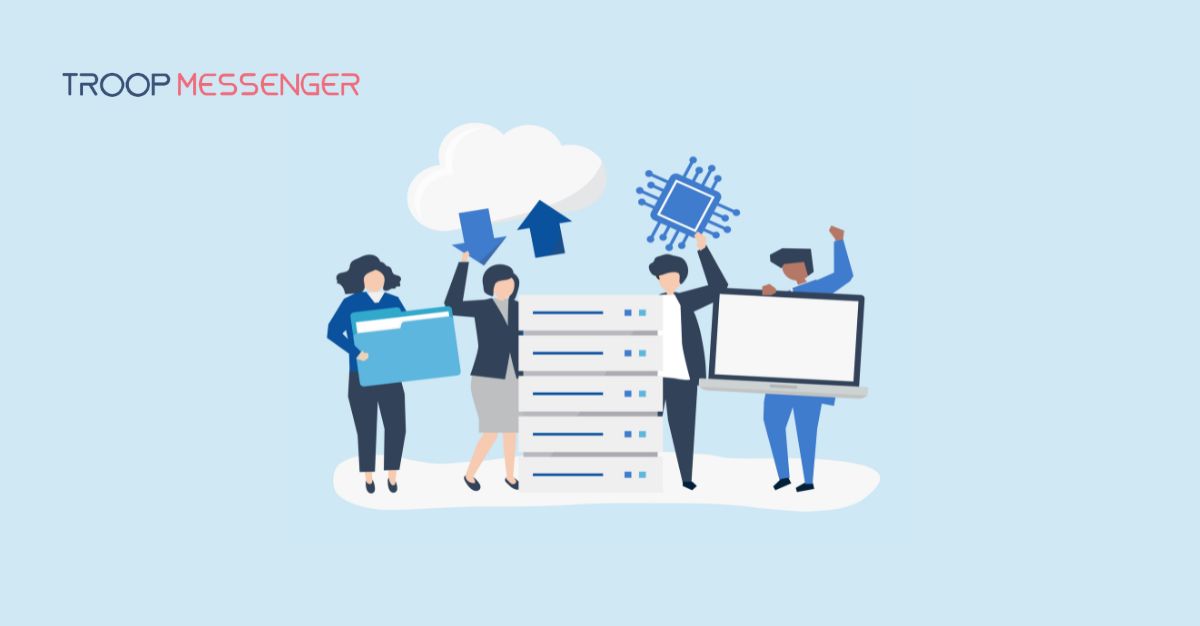Connect with us

Evolution of Collaboration in the Modern Workplace
The evolution of work collaboration has undergone an ocean change over the years. Read on to know how we have started and where we are now. With the dramatic enhancements in technology, productivity and collaboration are nothing but the best.
Isn’t it funny how things seem futuristic to us when they were first released into the market? Down the lane, the era of beepers and brick cell phones defines the high-tech company culture.
Table of Contents
However
Change is inevitable in business and organizations that do not adapt are obviously at risk of stagnation. At times, it feels uncomfortable to step out of the norm and do things differently. At the start, people were not able to step out of their comfort zones and get accustomed to automated machines. It is impossible to step back but the evolution of collaboration can be concluded as a blessing in disguise.
In today’s world
Change is unfolding at a faster rate than ever before. Like all cultures, workplaces are gradually shifting to make room for new establishments and expectations. We have been shifting from a commodity-based to a community-based society. Thanks to the preeminent ubiquity of the internet, we are heading to a collaborative modern workplace.
I cannot imagine how the workplace collaboration would have been pre-email but to a certain degree, email creates some white noise. An email has become a weapon of mass distraction that ravages brain activity and productivity. The email could damage far more than you realize. Looping a fellow worker into a discussion and dashing off an email every time is not a good idea.
Fun fact: “The average employee spends 13 hours a week checking, reading, and responding to emails - eating up 28% of the work week.”
If you are out of the desk for a while and unable to respond, you will have tons of unread emails waiting for you.
According
To study, nearly 80% of the average employee's time is spent interacting with and giving feedback to fellow employees. Emails are handy but it only has the ability to work as a one-way communication tool, not a team collaboration channel. And this is where collaboration fills the space by bridging the gap between coworkers and between employees and managers as well.
The way people are working is changing in front of our eyes with each passing day. Hundreds of software are emerging that allow teams to hustle more with less stress. Workplace or office collaboration is no longer a buzzword as many companies have already adapted and relishing because of its obvious benefits:
1. Two-way communication
As we discussed earlier, communication is key in the workplace and teams need an effective tool that is free of fiction. Unlike previous ways of communication, it is not mandatory to be present at the desk to respond. As the software comes for all platforms and devices, employees can have uninterrupted coordination and be in sync.
2. File Sharing
According to me, this is a boon. Not literally. But file sharing is the most needed feature in any collaboration software. With it, any format of media can be shared, viewed, accessed, and retrieved. Groupware allows the managing and processing of documents among several users in several systems at anytime, anywhere.
3. Touch the clouds
Thanks to the rise of cloud prominence in work management which enables an alternative. With cloud services, you can supervise from any device which eradicates confusion. Also, cloud technology is less expensive than on-premise solutions.
4. Powerful filters
Who likes to scroll to the top for a document you sent a month ago? It is a time-consuming process to find old files or previous conversations or any links. With robust search filters, you can now find what you are looking for at the speed of light.
Bottom line
You do not need to “suit up” every time you work as we have a work-from-home facility now. Gone are the days when we have adhered to a particular approach. It is not mandatory to hold on to email in workplace communication where the communications get dropped off at certain times. The time that is lost is lost forever and, in a business, that is tantamount. The more you save on unnecessary things, the better the results for your team. Embracing team communications saves time, resources, and effort. However, a prominent tool can speak for itself. The evolution of collaboration has gone through a long walk.



.jpg)
.jpg)



